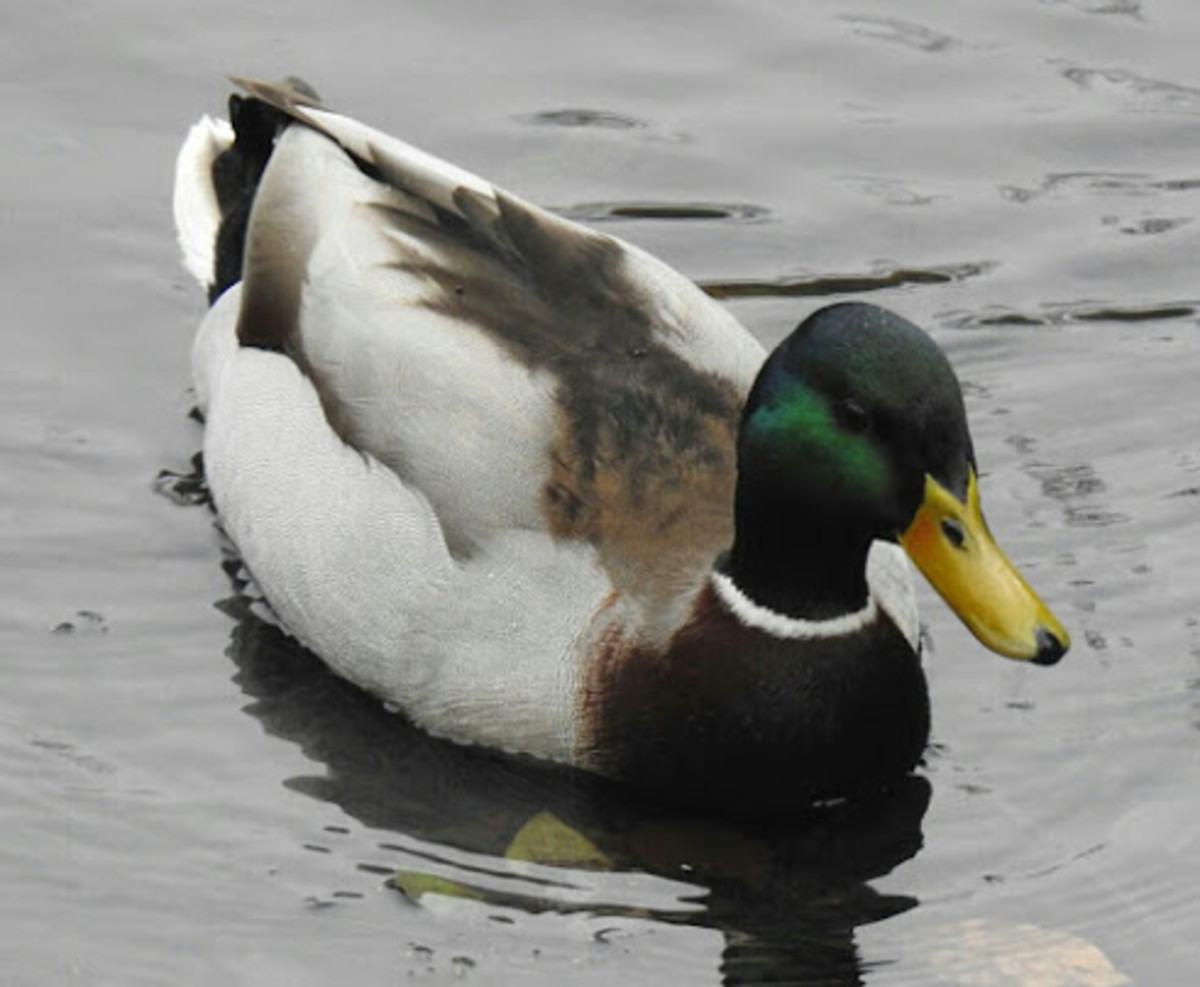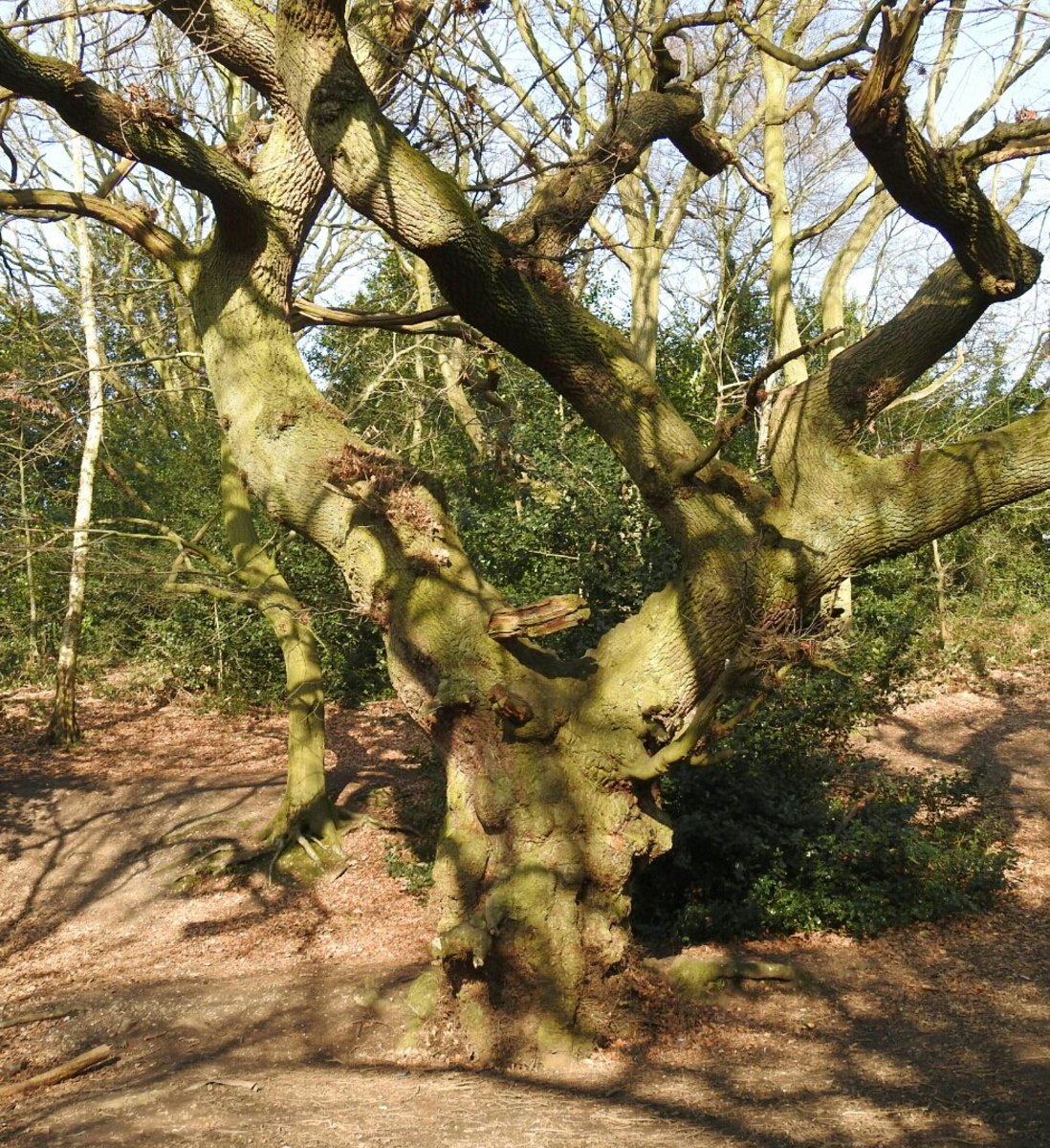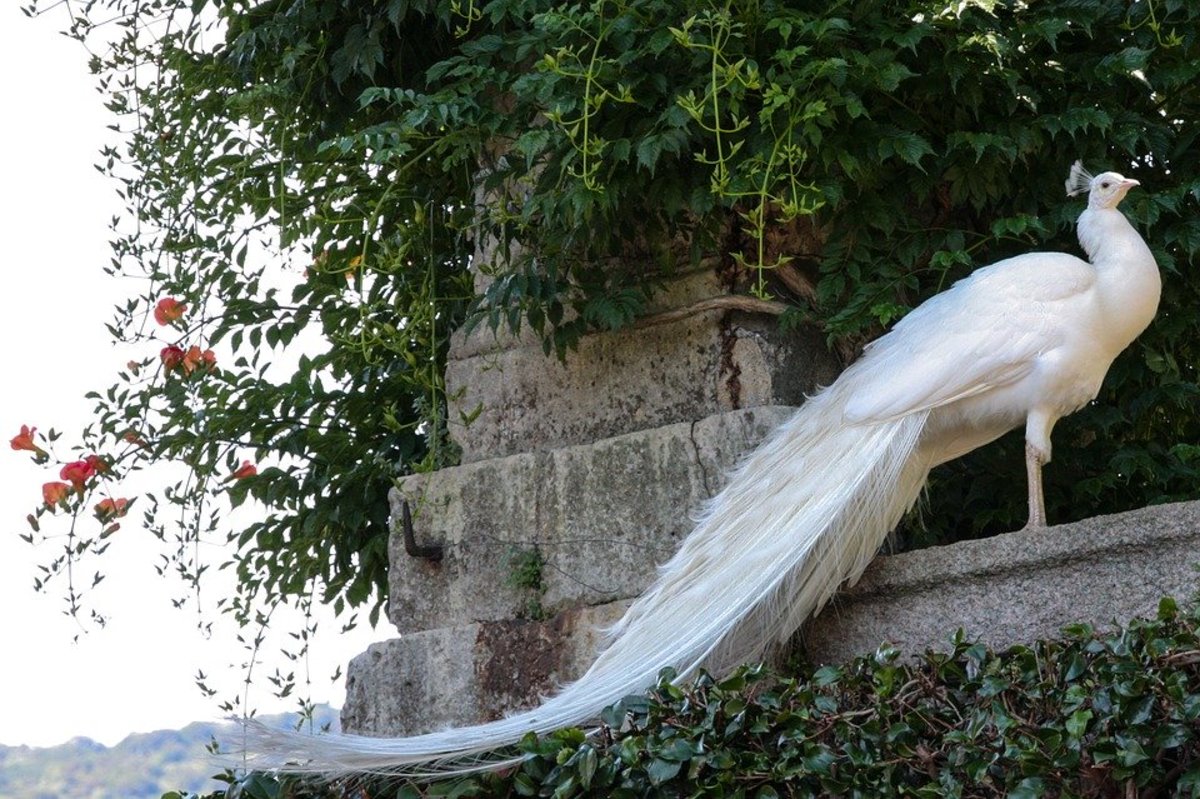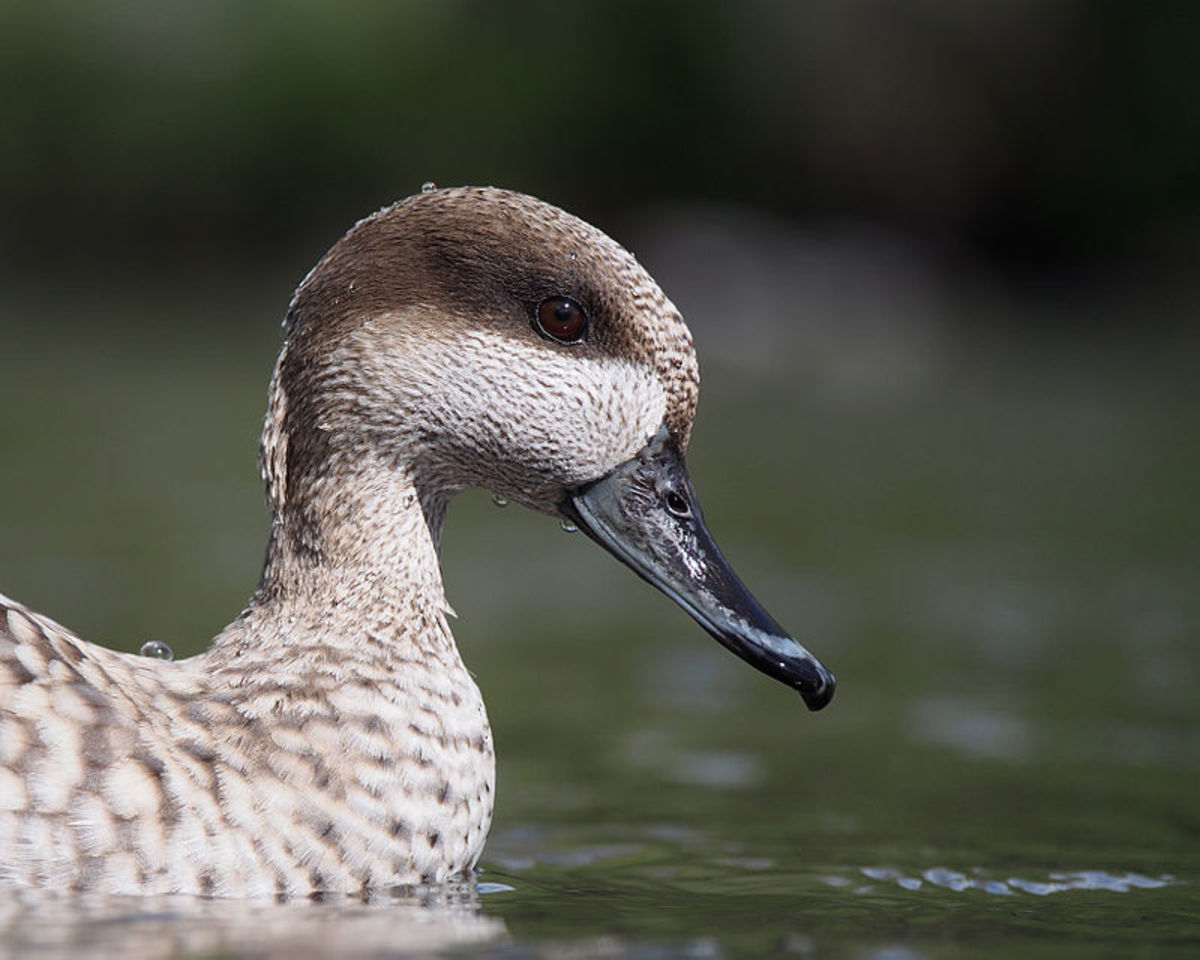The West Midlands All Dayer Autumn 2019
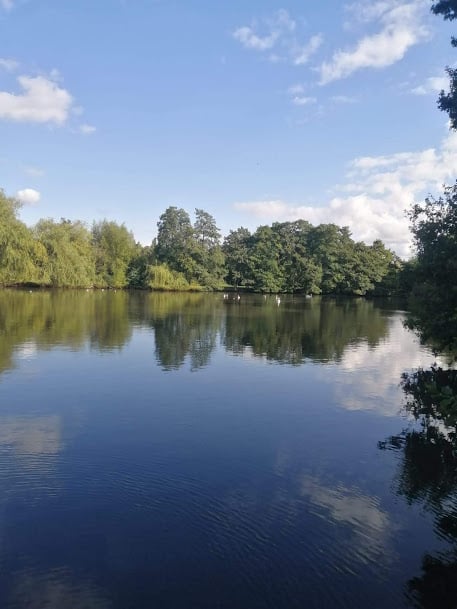
The Park is Mine
The end of the spring edition of the West Midlands All Dayer in many ways, was a symbolic moment. May is usually the time when spring migration judders to a halt, with all of the arrivals firmly established on their territories. The summer months are normally a quiet time for birds, and many of us including yours truly instead use the time to appreciate the natural beauty of other taxa such as butterflies, dragonflies, plants and anything else that happens to warrant our attention. We slow down, relax and revel in long sun-filled days. With the coming of August though, the birds start to garner our attention once more as the long drawn out spectacle that is Autumn migration begins in earnest.
Conveniently, the 2019 Autumn All Dayer was scheduled for the first Saturday in September. There had been a possibility that it would have taken place on the last Saturday in August, but fortunately for me, most of the participants favoured the 7th, so the date was set. The West Midlands All Dayer actually began life way back in the late 1980’s when John Belsey and Stuart Croft conducted all day birding sessions at Upton Warren in Worcestershire. Since then, the concept of all day birding in the Midlands has snowballed into a region wide event, and the most recent event saw a record 24 sites take part.
As I did for the previous edition, I retired to bed early on the Friday with the intention of rising well before dawn bright and as fresh as a daisy. However, as soon as my head hit the pillow I knew that plan was doomed, as my brain struggled to switch off. I did manage some sleep, but when my eyes shot open at a little after 4 am, I felt like I hadn’t slept at all. Groggily, I got myself ready and prepared some refreshments which would no doubt be needed later in the day.
I arrived at Elmdon roughly fifteen minutes before dawn. Light was already beginning to appear on the eastern horizon, but it was still virtually pitch black, and the cool night air shook me awake with a jolt. Walking up the main path towards the lake, I took a moment to survey my surroundings and revelled in the peace and stillness of the park. A few Robins could be heard thereabouts, but other than that nothing, not one soul. I couldn’t help but smile, as I proclaimed out loud: ‘The park is mine!’
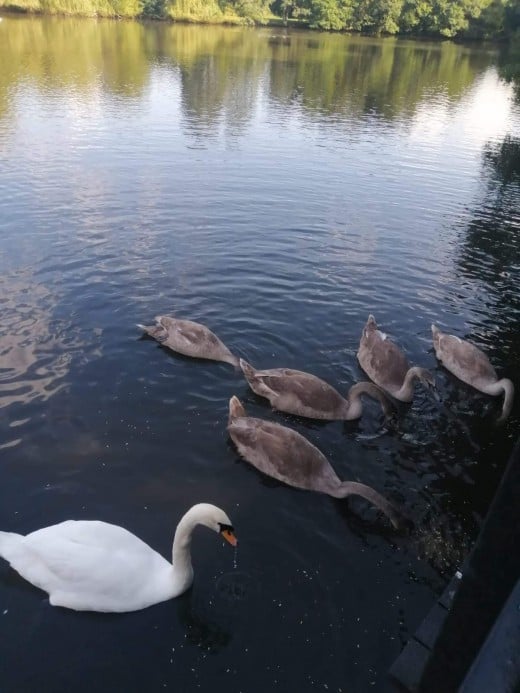
The Kingfisher and Reed Warbler
Of course, having Elmdon Park as my own private kingdom is pure fantasy, and that illusion was quickly shattered when I said good morning to the first dog walker of the day. However, at approximately 6:30 am, I would experience one of several highlights of the day. I had been casually walking around the lake, eagerly ticking off common species such as Mallard, Tufted Duck and Mute Swan. I even took the time to count the birds, and was impressed with the 120 Black-headed Gulls that were loafing on the water. A couple of close scans of the flock though failed to reveal what would have been a very welcome Mediterranean Gull. A few moments later, virtually the entire flock lifted from the water as one, and flew off. Moving on, I crossed the recently repaired bridge on the south side of the lake, and proceeded to walk along the western side. For a moment, I was mesmerised by the shadows that danced among the trees, but a high pitched trilling call soon shook me awake. I followed the direction of the sound, and before I knew it, an azure blue flash darted past my position and up Hatchford Brook. It was a Kingfisher- only the second one that I’d ever seen here and the first that I’d seen fly across the lake. I was delighted, and actually proclaimed so out loud. Luckily nobody was around to hear me.
Barely fifteen minutes later, I would encounter my second highlight of the day. At first, all I saw was a small brown passerine like shape flit from one reed strand to the next, but then came a short and rather unobtrusive ‘che’ like call that betrayed the presence of at least one Reed Warbler. Reed Warblers have bred by the smaller pool at Elmdon for a number of years now, but for some reason I’d failed to locate any this past spring and summer. However, with the coming of autumn, I was now seeing them with welcoming regularity. Were they birds en passage? Or had they actually bred and somehow evaded both my ears and eyes? I suspect that I’ll never know for sure.
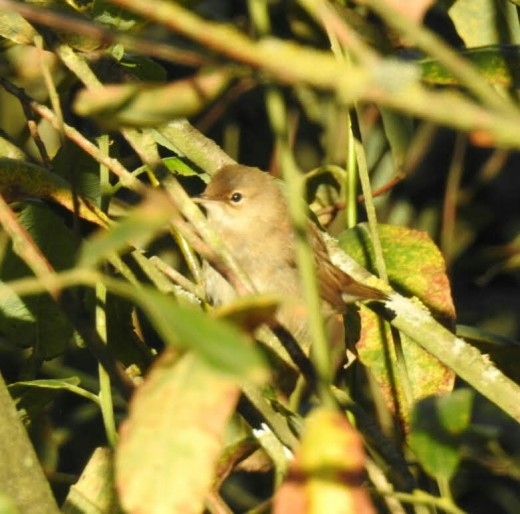
The Conversation
Pure adrenaline had powered me through the first few hours, but upon completing a survey of the park below the hill, I was starting to flag slightly. Admittedly I had been going full pelt, and one birder via Twitter even suggested that I should slow down- not bad advice. Trudging up the hill, I made my way to Elmdon Manor Nature Reserve, where I hoped to add Lesser Spotted Woodpecker to my day list. However, the bench conveniently placed by the entrance and overlooking the small pool called to me, and I took the chance to rest. I noted a few Moorhens, and scanned for Little Grebe, which, unsurprisingly, I could not find. I also noted a few Mallards, an eclipse plumage male and a couple of females, but the third one looked slightly different. Smaller, slimmer, a lighter bill and a whitish belly; it was a female Gadwall. I quickly fished out my phone and duly entered my 46th species of the day. Frustratingly, she did not hang around though, fleeing with the Mallards, presumably spooked by a passing car.
Shortly after their departure, a man on a bike entered the reserve, and after exchanging greetings I resumed my vigil of the pool for a short while, before exploring the rest of ‘The Shire,’ as I call it. Just before entering the walled garden, I saw the guy with the bike again and saw him clutching a camera. He saw my binoculars, and just like that we started talking about birds. I rarely encounter any other birders or naturalists on my patch, so this particular encounter was rare, almost as rare as the Firecrest that I once found here. What was even more remarkable was that he knew me:
“You’re James aren’t you?” he asked.
“Yeah,” I replied with a mixture of surprise and confusion.
“I know you off Twitter,” he said.
I’ve met a few birders I know from social media in the field, and whenever one recognises me, that line from Citizen Khan always plays in my head: “They all know me, you know!” The bike guy turned out to be a Midlands birder called Steve, who was not only an Elmdon regular, but also lived in the same neighbourhood as me. We chatted as if we’d known each other for years, as we duly compared notes and regaled each other with tales of what we’d seen both on our patch and in our neighbourhood.
The most intriguing part of the conversation concerned the Ring-necked Parakeets. These brightly coloured, noisy and exotic looking birds are a relatively recent addition to the park’s avifauna, and inspire mixed feelings in people. One thing is for sure, they’re here to stay and their numbers will only increase. Before the current All Dayer, the highest I’d counted on the patch was 8, but had heard reports of flocks numbering 30 birds from keen eyed locals. Steve wasn’t at all surprised by the figure, and informed me that he had personally seen a flock of 24. Moreover, he had found no less than six nest sites within the park. Six! I was flabbergasted. I hadn’t found any, although I had seen pairs investigating tree holes earlier in the year.
After bidding farewell to Steve, I decided to investigate a few of the sites that he mentioned and sure enough, I found Parakeets, then more and a few more after that. In the end I counted 15, plus 3 juveniles, so that confirmed in my mind at least that I did indeed have breeding Parakeets on my patch.
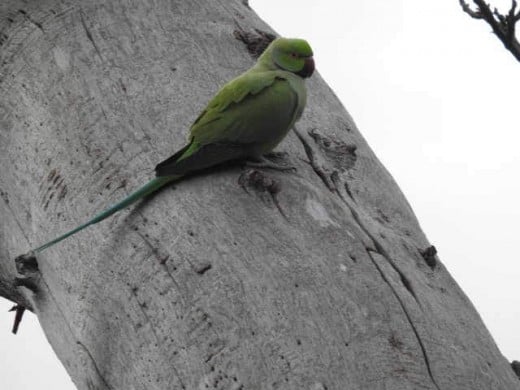
A Much Needed Rest
9:40 am, and the early, fast start had definitely gotten to me now. The adrenaline had worn off, and so after virtually staggering around the meadow, I retreated back to the car for a much needed cup of tea. For most people, their day had only just begun. There was a ‘Fun Day’ taking place in the Park, and I’d seen the marquees and stalls being set up as I staggered down the hill. Another good reason to retreat. Thankfully I’d known about this ‘Fun Day’ for a few weeks, so I’d simply planned to spend my time in the quieter part of my patch, Castle Hills.
I returned home to a very excited and yampy Jack Russell. In the past, I’d taken Marley with me on the All Dayer, but this time I decided to leave him at home, and simply return periodically to walk him. I wanted my concentration to be at 100% and Marley, bless him does have a tendency to divert my attention.
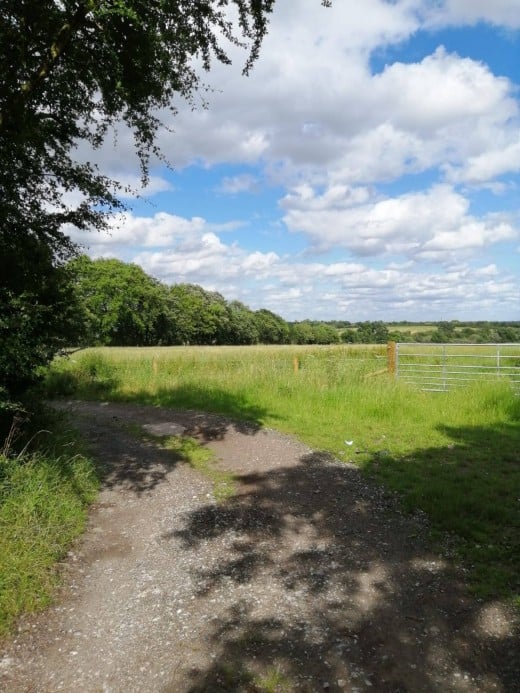
Gun Fire
With time ticking away fast, and my score still one shy of the half ton, I decided to pay my one and only visit of the day to the other half of my patch. Castle Hills to me at least, represents a sort of lost world; a land that perhaps even Constable himself may have recognised perched precariously on the precipice of the rural world. Beyond it to the north lies Elmdon, and the rest of the Midlands urban sprawl. Noisy, yet peaceful at the same time, Castle Hills boasts species that I could never hope to find on the other side of Damson Parkway. Thus, I was fairly confident that I would at least be able to equal my tally from last year.
Before I’d even reached the Farm itself, I’d sailed gently past the half ton, as I ticked off no less than nine extra species. Amazingly, at just an hour into the afternoon, my score stood at 58. I remember leaning on the farm gate, gazing out across the fields towards Elmdon and breathing a deep sigh of relief. In my head, I stepped off the gas pedal, and began a gentle walk down the newly mown footpath.
As I walked, I heard two loud bangs. At first, I thought nothing of it, as I’m used to hearing bird scarers from nearby Birmingham Airport. But these sounded different, more like gunfire. After crossing the Brook and passing through the coppice into crop fields, I discovered the source of the sound. A glance to my left revealed a man in full camouflage gear seemingly staring at something on the ground. I assumed he was a metal detectorist initially; I’d seen them here before, but then after a few moments he reached down and picked up a dead Woodpigeon and then a Carrion Crow. Bloody hell! It was gunfire!! I watched horrified through my binoculars. Fortunately, he had no idea at all that I was there, and he idly continued to pick up more dead birds that he had blasted out of the sky. I wondered who it was...could it be the farmer, the landowner, a ‘pest’ controller or just some guy who liked shooting things? Either way, I wisely decided to keep my distance and simply continued on my way up towards Damson Parkway, taking great care not to attract his attention.
Redstart and Whinchat
After crossing the crop fields, I followed the path through thick hedgerow. Interspersed between the Hawthorn and Oak were a couple of Crabapple trees that had just dropped their fruit. Everywhere I looked and listened, there were birds- mostly Tits, Robins, Dunnocks and Finches flitting through the branches calling excitedly. A few came to the ground to forage in the leaf litter. However, it was a movement to my left in the trees that caught my attention- a flicker of red. At first I thought it was another Robin, but a closer look revealed a red tail with a sandy brown plumage. It seemed altogether shyer than the others, preferring to skulk rather than brave a trip to the ground. It was a female Common Redstart, only my second record for the patch, and my 59th species of the day. I contemplated fishing out my camera, but she was fairly well hidden. Moreover, I dared not take my eyes off her. However, she didn’t seem overly keen on hanging around, as she flitted up into an oak tree and out of sight.
Once at Damson Parkway, I simply turned back and retraced my steps. Fortunately the man I’d seen earlier had vanished, and all seemed at peace with the world. I walked back past the Farm, and as usual peered through a gap in the brickwork of one of the abandoned farm buildings. I do it every time I visit, in the hope that I stumble across a Little Owl. However, I haven’t had the pleasure of finding any yet.
I entered the first pasture field, although it had been a fair while since I’d seen any livestock there. During the summer it was a rich meadow full of Great Burnet, Bird’s Foot-trefoil and Butterflies such as Marbled White. Now, after being cut it was mostly grass but with a few wildflowers dotted hereabouts. After walking maybe twenty yards, a small rusty brown bird caught my eye. I raised my binoculars and took in the sight of a gorgeous male Wheatear looking resplendent in fresh autumn plumage. He didn’t stick around for long, electing to fly off before I could carry on. I had hoped for a photograph, but he was just a little too far away for me to be able to do him any justice.
Once through the field, I entered The Thicket, the place that was most likely to deliver one of Castle Hills star birds. I slowed my pace and began to scan the surrounding hedges and saplings. Sure enough, I saw what I had come looking for- a gorgeous male Whinchat, a small passerine with a vague resemblance to a Robin but altogether more spectacular. The prominent eye stripe or supercilium is undoubtedly the standout feature of this bird, and he looked rather handsome in the sunlight. That wasn’t it though, I found not only one, but two more in the vicinity of The Thicket, all males, all heading back to warmer climes after spending the spring and summer up on Britain’s moorlands. By the time, I had returned to the car, it was only 2pm, but my day list stood at a healthy 64- a new record for my patch. Should I try for 70? No, my brain screamed at me to rest again. I decided that the afternoon would be a gentle one, and that my final species of the day will be one of Elmdon’s old faithfuls.
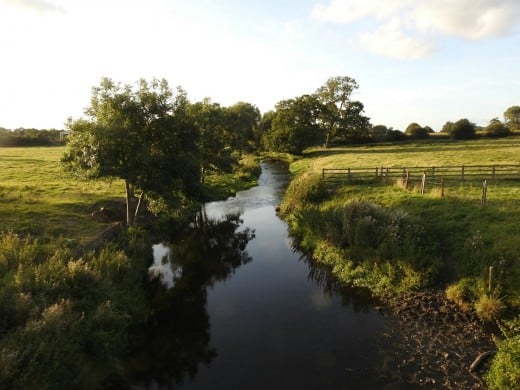
End of the Day
After taking a spot of lunch, I was gladdened to finally be joined by my girlfriend Paula, who would help me see out the day. Firstly, we returned to Elmdon for a gentle walk around the lake. It was mid afternoon and the ‘Fun Day’ was over. The stalls and marquees had been cleared away remarkably quickly, leaving the park almost as it had been when I’d left it hours earlier. However, there were still a fair number of people and dogs present, and unsurprisingly bird life was fairly thin on the ground. The lake itself had been teeming with life at dawn, but now was virtually deserted. I suggested to Paula that we take a slight diversion from the All Dayer in order to show her one of my other local haunts- a short section of the River Blythe near Eastcote in Solihull. It’s a quiet spot that offers fantastic views of Little Egrets, Grey Herons, Grey Wagtails and Kingfishers.
I did contemplate whether to try and fit in another trip to Castle Hills, but the light was beginning to fade. Already the exposed pebbles on the Blythe were becoming cloaked in shadow. As beautiful as it is, Castle Hills is not the kind of place you want to find yourself at night. Just a couple of days before, I’d ventured there at dusk to try for a Barn Owl. I’d seen one there back in June, and so I thought I’d try my luck. The conditions had been just right, and I’d stood in the right place...by the farm overlooking a field where the grass had been allowed to grow long. With the darkness creeping up on me though, I was itching to get away. The farmhouse and its deserted buildings created a rather eerie atmosphere. Plus, in my head I imagined something sinister lurking in the hedgerow. I walked briskly away without seeing any Owls, but my endeavours would be rewarded by a flyover Common Snipe- which was a first for me at The Patch.
Instead, we opted for Elmdon, the place where it had all started, and the one place that might offer up my final species. Just like in the previous All Dayer, Paula and I found ourselves by the Lake straining our ears for Tawny Owls. There’s at least one resident pair, and we hoped they would oblige us with their haunting yet beautiful sound. Last time it had been me that had been thrown by outside noises, this time Paula stopped in her tracks...we listened for a few moments...nope, that was a distant human voice. Then, as we walked round the eastern shore of the lake, we heard a familiar ‘ke-wick’ ‘ke-wick’ coming from the well wooded opposite shoreline. It was close, and thus unmistakable. I happily added my 65th and final species of the day. Just a few moments later, the iconic song of the male responded from way up on top of the hill. It was almost pitch black now, but Elmdon is a place that I’m more familiar with in the dark. It’s open and the bright lights from the nearby streets gave us a sense of direction. We returned to base to rest and quietly celebrate what for me was a record day on my patch.
The Complete Results
Well done to everyone who took part. My thanks to Philip Andrews for organising this edition. Also to John Belsey & Stuart Croft for getting the ball rolling all those years ago. Special thanks to Paula, Marley and Eddie for keeping me company. See you in May.
Belvide Reservoir: 100
Middleton Lakes: 99
Branston GP: 95
Ladywalk: 92
Grimley: 92
Sandwell: 88
Upton Warren: 84
Chasewater: 81
Bittell Reservoirs: 77
Brandon Marsh: 74
Dairy Farm NR: 74
Marsh Lane: 73
Venus Pool: 72
Salford Priors GP: 70
Alvecote Pools: 69
Sutton Park: 69
Doxey Marshes: 66
Elmdon Park & Castle Hills: 65
Shustoke Reservoir: 64
Morton Bagot: 64
Earlswood: 63
Whitemoor Haye: 63
Saltwells/Fens Pool: 60
Draycote Water: 55
This content is accurate and true to the best of the author’s knowledge and is not meant to substitute for formal and individualized advice from a qualified professional.
© 2019 James Kenny


